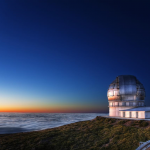
Fostering research excellence
in EU Outermost Regions


Fostering research excellence
in EU Outermost Regions


The OR’s disperse geographical location in the globe provides unique opportunity access data on the Oceans (Indian; Atlantic) and to study its interactions with land, atmosphere and space. The nature of Earth observation and the arrangements for international coordination essential for effective operation of global observing systems are introduced by the Committee on Space Research of the International Council for Science to prepare a roadmap on observation and integrated Earth-system science for the coming ten years (2016-2025). Observations that are organized on a systematic basis and observations that are made for process understanding and model development, or other research or demonstration purposes, are covered. The OR in this context can contribute to the development of Earth system & Universe Sciences in EU due to its geostrategic positioning, as several projects are implemented in the OR on this field.
Challenges:
Assets of the Outermost Regions:
Fields of investigations/expertise:
The Observatories of the Instituto de Astrofísica de Canarias -the Teide Observatory in Izaña (Tenerife), and the Roque de los Muchachos Observatory, in Garafía (La Palma)- are situated at two of the most privileged sites for astronomical observation. Research activity at the IAC is structured around individual astrophysical research projects.These projects are grouped into six global research lines that cover most fields of theoretical, observational or instrumental astrophysics and collaborations with researchers from other centers are recognized and encouraged